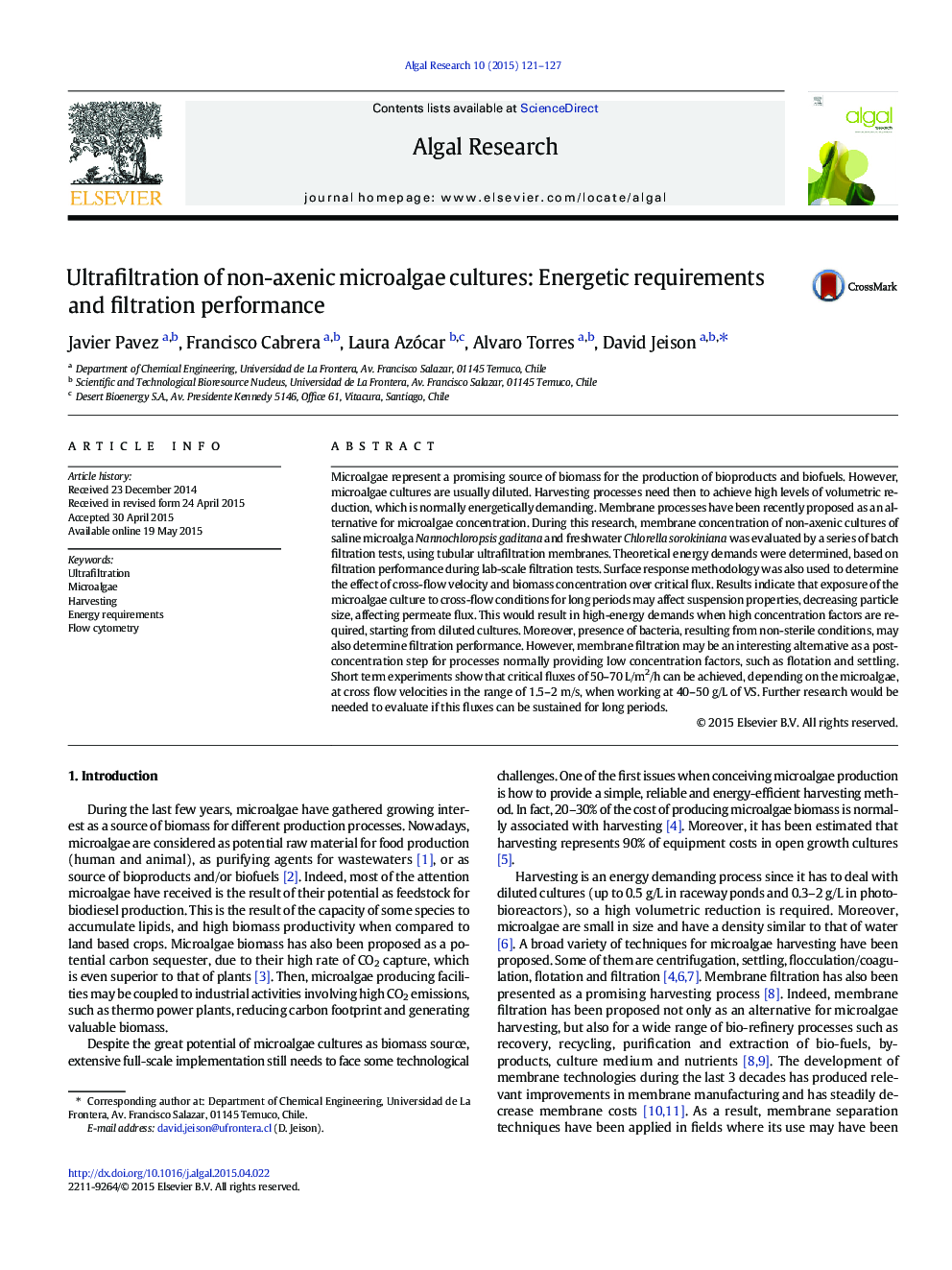| Article ID | Journal | Published Year | Pages | File Type |
|---|---|---|---|---|
| 1742026 | Algal Research | 2015 | 7 Pages |
•Presence of bacteria may limit membrane filtration of microalgal cultures.•Cross flow velocity is a determining factor for membrane filtration of microalgae.•Exposure of microalgal cultures to high shear may reduce filtration performance.•Membranes may be an interesting tool for post-concentration of microalgae.
Microalgae represent a promising source of biomass for the production of bioproducts and biofuels. However, microalgae cultures are usually diluted. Harvesting processes need then to achieve high levels of volumetric reduction, which is normally energetically demanding. Membrane processes have been recently proposed as an alternative for microalgae concentration. During this research, membrane concentration of non-axenic cultures of saline microalga Nannochloropsis gaditana and freshwater Chlorella sorokiniana was evaluated by a series of batch filtration tests, using tubular ultrafiltration membranes. Theoretical energy demands were determined, based on filtration performance during lab-scale filtration tests. Surface response methodology was also used to determine the effect of cross-flow velocity and biomass concentration over critical flux. Results indicate that exposure of the microalgae culture to cross-flow conditions for long periods may affect suspension properties, decreasing particle size, affecting permeate flux. This would result in high-energy demands when high concentration factors are required, starting from diluted cultures. Moreover, presence of bacteria, resulting from non-sterile conditions, may also determine filtration performance. However, membrane filtration may be an interesting alternative as a post-concentration step for processes normally providing low concentration factors, such as flotation and settling. Short term experiments show that critical fluxes of 50–70 L/m2/h can be achieved, depending on the microalgae, at cross flow velocities in the range of 1.5–2 m/s, when working at 40–50 g/L of VS. Further research would be needed to evaluate if this fluxes can be sustained for long periods.
